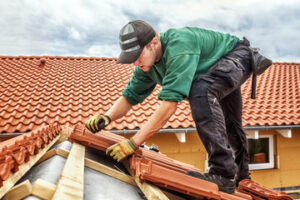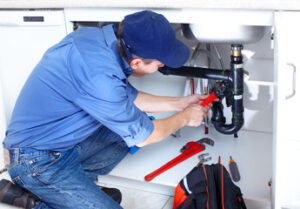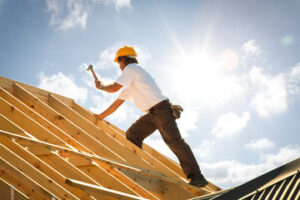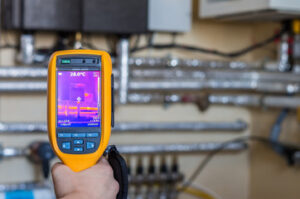The guidance of a skilled Personal Injury Lawyer makes all the difference when pursuing financial compensation for your losses. They will help you establish negligence and build a strong case.
They will provide an objective perspective when emotions run high. They will also collect evidence from medical and employment records for trial preparation. Contact Personal Injury Lawyer Duluth now!

Personal injury law encompasses many cases, from car accidents and slip-and-fall incidents to medical malpractice and product liability. The legal representatives who work in this area of law are known as personal injury lawyers, and they focus on helping clients who have been injured due to the negligence or intentional acts of others.
A good personal injury lawyer will be able to assess each case individually and determine whether or not the claim is viable. This will involve gathering evidence such as police reports, witness testimony, medical records, and accident scene analysis. Personal injury lawyers also know how to negotiate with insurance companies and the at-fault party to get their clients the compensation they deserve.
One of the most important traits of a good personal injury lawyer is their ability to remain objective and make decisions based on the facts of the case, not emotions. They will also be able to collect and present evidence effectively in court to demonstrate that the other party was negligent. This includes examining police reports, interviewing witnesses, reviewing medical records, and consulting with experts.
They will be able to calculate the full extent of your damages and ensure that all current and future expenses are covered, including medical treatment and lost wages. They will also consider non-economic losses such as pain and suffering and loss of quality of life. In New York, your damages may be reduced if you are found to have contributed to the accident, so it’s important to have qualified representation who can help you prove fault.
Another thing to consider when choosing a Personal Injury Lawyer is their track record and reputation. You should check out client reviews on various websites to see what people are saying about the firm. You should also look at any awards the lawyer has received from other organizations in the industry. Having an excellent track record is a great way to build trust with potential clients.
Lastly, you should also consider how much the Personal Injury Lawyer charges for their services. Most attorneys charge a contingency fee, which means that they only receive payment when they successfully recover compensation on your behalf. This is a much better option than paying hourly rates, which can add up quickly.
Reputation
A personal injury lawyer helps individuals and families who have suffered harm due to the negligent actions of others. They can help clients get compensation by negotiating with insurance providers or filing personal injury lawsuits in court. Some lawyers specialize in a particular area of personal injury law, such as medical malpractice. This specialization allows them to gain a deep understanding of the relevant legal laws and build a robust case strategy.
A strong reputation is essential for a successful personal injury lawyer. This is especially true for those who take on high-profile cases with significant financial stakes. These cases are a big part of a personal injury lawyer’s job, and they must be prepared to deal with the pressures that come with them.
Client management is another critical aspect of a personal injury lawyer’s job. These attorneys often deal with clients who are emotionally upset and may not always think clearly. Managing these types of clients can be challenging, and it is important for lawyers to maintain an objective perspective and make decisions that are based on legal merit rather than emotions.
Legal research is also a common component of a personal injury lawyer’s job. They must stay up to date on all of the latest civil law trends and precedents. This can be a time-consuming and complex process, and it is crucial for a personal injury lawyer’s success.
The field of personal injury law is vast and includes a variety of practice areas. For example, New York personal injury attorneys could handle cases related to pedestrians hit by cars, workers injured at construction sites, victims of medical malpractice, or individuals who have been injured by defective products.
A good personal injury attorney will have a broad knowledge of all of these areas and be able to provide the best possible service to their clients. They will be able to explain the various legal options available and work to achieve the maximum compensation possible. They will be able to negotiate fair settlements and, if necessary, take cases to trial. They will also be able to handle all the paperwork and legal hurdles that are involved in a personal injury case.
Fees
A contingency fee arrangement is a popular way for injury victims to hire legal help without having to worry about upfront fees. This arrangement ensures that a lawyer will have a financial incentive to work diligently on your case and maximize your chances of success. It also eliminates a financial barrier to pursuing justice and levels the playing field against large insurance companies.
Most personal injury lawyers will provide an initial consultation for free. During this meeting, they will listen to the details of your case and advise you on whether you have a valid claim. In addition, they will provide an estimate of how much your case may be worth.
The fees that personal injury attorneys charge vary by jurisdiction. In general, they are based on a percentage of the final recovery sum, with certain expenses deducted first. Your attorney will outline these fees in a contract, typically called a retainer agreement.
Some expenses are essential to building a strong case, such as hiring investigators or reconstructing an accident scene. Other expenses are less critical but still necessary, such as copying fees or long-distance telephone calls. Some fees are standard, such as filing fees and court fees. Other fees are billed by third parties, such as medical record retrieval services or expert witness charges.
A good personal injury lawyer will work hard to build a compelling case that establishes liability and quantifies damages. They will secure all helpful evidence and document all applicable losses. They will also fight to secure fair compensation for you. While you can’t get back your lost income or regain your health, you may be entitled to compensatory damages.
Personal injury attorneys often find themselves pitted against large insurance companies and corporations – the metaphorical ‘Goliaths’ of the legal world. These adversaries have vast resources at their disposal, including experienced legal teams and seemingly limitless funds. Battling against these entities is challenging, but it can be incredibly rewarding, especially when you are able to secure justice and compensation for your client, the ‘David’ in the battle.
Communication
Whether they’re representing a client in court or negotiating with insurance companies, personal injury lawyers must be able to communicate effectively. This involves being able to explain complex legal terms and processes in a way that’s easy for clients to understand. It also means being able to answer questions about the case in a clear and timely manner.
In addition to effective communication, a good personal injury lawyer should have great problem-solving skills. When cases get complex and have more twists and turns than a pretzel factory, it’s important to be able to quickly unearth solutions that others might miss. Personal injury attorneys with mad problem-solving skills can see a path to victory that wasn’t apparent at first glance and use that information to help their client win the case.
Personal injury attorneys are tasked with handling the complexities of many different types of cases and juggling multiple deadlines. They must be able to manage their time effectively and work collaboratively with other professionals, including medical experts and insurance companies. An excellent personal injury lawyer will have a strong work ethic, which means they’re dedicated to securing the best possible outcome for their clients.
Empathy is a crucial soft skill that personal injury attorneys should have, as it helps them build trust and support with their clients. Often, personal injury cases involve traumatic experiences and financial uncertainties, so it’s important for lawyers to be empathetic and sensitive to their clients’ needs. Empathy also helps them build a rapport with their clients and encourages them to be more open and honest in their communications.
In the field of personal injury law, it’s essential for lawyers to stay up-to-date on the latest laws and trends. A good personal injury attorney will continuously expand their knowledge through continuing education seminars and other professional development opportunities. This ensures they’re prepared for any new developments in the law that could affect their clients’ cases. They should also have the ability to keep up with changing medical research and industry standards, as these could have an impact on how they handle their clients’ cases.








